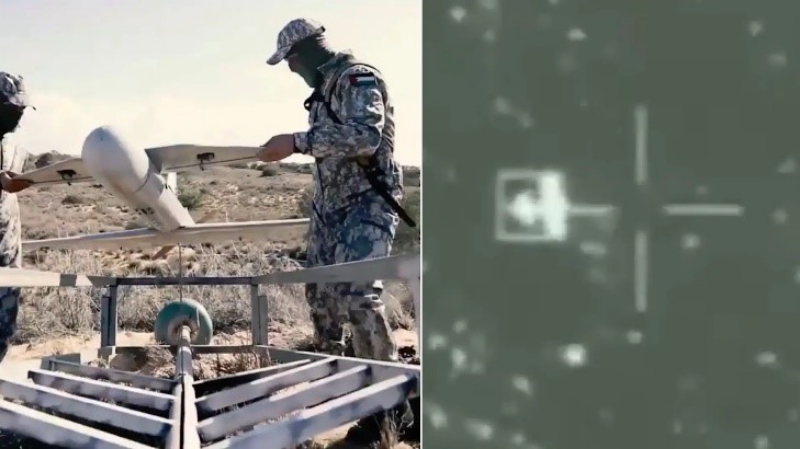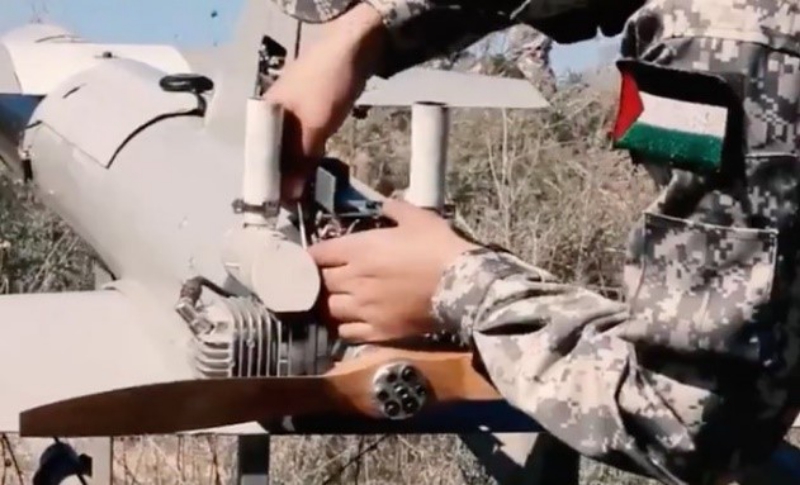While Israel has previously dealt with Iranian drones, it seems that Hamas has acquired a similar technology that enables the organization to use explosive-laden drones.
Israel intercepted six weaponized drones through various means. A number of them were intercepted by IAF fighter jets, while one was intercepted by the Iron Dome system in flight. These suicide drones were reportedly carrying around five kilograms (11 pounds) of explosive payload and were intended to avoid the Iron Dome defense system, unlike the regularly intercepted rockets.
These drones resemble the Iranian Ababil military drone but have been claimed as being developed and built locally by Izzedine al-Qassam Brigades, Hamas’ military wing, and are named “Shehab.” The Iranian HESA Ababil is notoriously affordable, designed mainly as a targeting drone with rudimentary surveillance capabilities and the capability to be used as a loitering munition (“suicide” or “kamikaze” drones).
Some observers have noted that while the engine of the Shehab and the Qasef-series drones share certain similarities, media released by Hamas shows that Commercial Off-The-Shelf (COTS) engine components are used in its drones, and they appear smaller in size. Hamas’ drones also have a visible commercial GPS module for guiding the drones to their target.

Left: Hamas demonstrates its new drone technology. On the right, an Israeli fighter-jet targets an incoming weaponized drone
As mentioned previously, the Iron Dome Defense system displayed the ability to intercept this type of emerging threat in combat. The Defense Ministry tested a range of complex scenarios (Aerial Threat Assessments) against the system, checking its ability to intercept multiple UAVs. However, compared to the cost of building a weaponized drone, the cost of using Iron Dome to intercept drones is economically disproportionate.
Drones as loitering munitions were hardly used by Hamas until the latest escalation, but there have been recorded instances of COTS drones being used for Intelligence, Surveillance and Reconnaissance (ISR). Additionally, recent innovative uses of drones by the Palestinian side include balloons with explosive payloads launched and sent into Israel over the border – a tactic that sees the balloons burst and the payload dropped, potentially bypassing defense infrastructure that might concentrate on high-speed and highly technical components.
On the other hand, there are a number of recorded cases in which the Israel Defense Forces used small drones (sUAS) of their own to conduct surveillance operations, when large military drones do not provide a tactical viewing advantage. Some of these drones have been successfully shot down and captured by Hamas, which publicized them on social media, although the IDF has responded that no important or sensitive data was lost through offensive forensics (the process for identifying information within an adversary’s drone).
Both Hamas and Israel will likely continue to adopt the use of drones as they become cheaper, avoid detection more easily, and unlike a rocket – which leaves a trail of smoke – might not reveal their launch location.
Photos: Dronesec
Source: Israel Hayom

